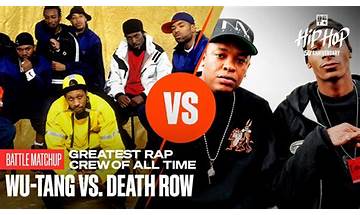Rock Music News: Top 10 Neil Young Albums (2024)
Neil Young was a member of half a dozen different bands going back to the “Jades,” “Squires,” “Mynah Birds,” “Buffalo The post Top 10 Neil Young Albums appeared first on Blues Rock Review.Neil Young was a member of half a dozen different bands going back to the “Jades,” “Squires,” “Mynah Birds,” “Buffalo The post Top 10 Neil Young Albums appeared first on Blues Rock Review.

Neil Young was a member of half a dozen different bands going back to the “Jades,” “Squires,” “Mynah Birds,” “Buffalo Springfield” and “Crosby, Stills, Nash & Young.” Even though some of the bands released albums with Neil Young songs on them, this list will only include albums produced where Neil Young is the primary artist.
Neil recently became a US citizen after residing in it for the past 50 years but he still retains his Canadian citizenship. He’s been inducted into the Rock and Roll Hall of Fame twice as both a solo artist and a member of Buffalo Springfield. He was born in Toronto, Canada on November 12, 1945 and his father was an author, journalist and sportswriter. After his parents divorced he lived in Winnipeg with his mother and joined his first band. Over his 60 year career Neil Young has produced over 60 record albums chronicling his music ranging from 40+ Studio albums, over 10 Live albums and multiple Compilation albums that this list is taken from.
Here are Blues Rock Review’s top 10 Neil Young songs.
10. “Harvest”
Harvest was Neil Young’s 4th studio album released in 1972 and it hit 4x Platinum in US sales. It produced radio hits “Old Man” and “Heart of Gold” and became the biggest selling US album for 1972. The title song was inspired by Neil’s then girlfriend, actress Carrie Snodgress’s mother. “The Needle and the Damage Done” was about Neil’s addict musician friends, specifically Danny Whitten, “Crazy Horse’s” guitarist who died shortly after the song was written. The album includes dozens of artists backing Young both instrumentally and vocally. The list includes Crosby, Stills and Nash along with the “Stray Gators,” “London Symphony Orchestra,” Linda Ronstadt, James Taylor and others.
9. “Harvest Moon”
Harvest Moon was Neil Young’s 19th studio album and was released in 1992. It was recorded and released 20 years after Harvest and many of the same musicians back him on both albums. After the intense electric performances contained on his previous albums Freedom and Ragged Glory it was a change of pace. Acoustic instruments dominated the album and even analog recording equipment was used to obtain a warmer sound, although the final recording was digital. The album received positive reviews and ultimately reached 2x platinum in sales. The moon is important to Young and has been in dozens of his songs. He explained the importance of the moon in his work by referring to its importance in ancient cultures as a religious symbol.
8. Everybody Knows This Is Nowhere
Everybody Knows This Is Nowhere with “Crazy Horse” is Neil Young’s 2nd studio album and was released in 1969. It was his debut with “Crazy Horse” when they were just a local bar band at the time. It was an era of musical rule breaking and the standard hit was normally 3 minutes or shorter on AM Top 40 Radio at the time. All of the cuts exceed the 3 minute limit and “Down by the River” is over 9 minutes with “Cowgirl in the Sand” being a little over 10 minutes in length.
7. After the Gold Rush
Neil Young released After the Gold Rush in 1970 and recorded it using a variety of musicians ranging from Stephen Stills, Nils Lofgren and members of “Crazy Horse.” The album cover is unique and uses an experimental photographic technique called “solarization” also known as the “Sabattier effect” by creating a silver image by exposing the developing print to light during development. It was used by Joel Bernstein the photographer to distract from the fact that the image of Neil was slightly out of focus. The most memorable song on the album was “Southern Man” condemning Southern racism. The title song itself was popular as well and was released in 1974 as an acapella version by the English vocal group “Prelude.” When asked what the song was about Young responded that he didn’t know but many interpreted it as being apocalyptic.
6. Rust Never Sleeps
Neil Young’s 11th studio album and 4th with the band “Crazyhorse” backing him. Rust Never Sleeps was released in 1979. The album includes both studio and live tracks and a concert film by the same title was released in August 1979, which was filmed at a 1978 performance of the new material at San Francisco’s “Cow Palace.” The album was about the demise of rock & roll in the wake of the disco craze. The title came from a Rust-Oleum commercial that Mark Mothersbaugh the lead singer of the New Wave Punk band “Devo” suggested. Hit songs from the album include “Hey Hey, My My (Into the Black),” “Pocahontas,” “Powderfinger” and “Thrasher.”
5. Greendale
Neil Young’s 25th studio album was Greendale and it was his 9th with Crazy Horse and was released in 2003. It’s a rock opera like “Tommy” or “Jesus Christ Superstar” but it is about the small seaside town of Greendale. It’s available as both a CD and a DVD and both contain the same songs, although the versions on the CD are longer time wise than the DVD. It’s the story of the Green family and their travails ranging from bad, deals to murder and environmental battles. As expected since it’s a “Crazy Horse” backed album it has plenty of opportunity for Neil to wail on everything from “Old Black” to a new Strat.
4. Freedom
Neil Young’s 17th studio album released in 1989 was titled Freedom and it was now 20 years since his solo debut. After years of disputes and litigation with his record label “Geffen” he left it for his original record label “Reprise.” Critics called it a return to the Neil Young that they thought they’d never hear again. William Ruhlmann writing for “ALLMUSIC” explained: “Freedom was the album Neil Young fans knew he was capable of making, but feared he would never make again.” The crowning composition that acted as bookend’s for the albums contents was “Rockin’ In the Free World,” with an acoustic version to begin and an electric version to conclude. The song title came from guitarist Frank “Poncho” Sampedro’s offhanded comment after a failed tour in the then existing Soviet Union. The 10 sandwiched cuts were selected from the best tracks of “several different unissued Young projects.” Ironically it was released just a month before the fall of the Berlin Wall which preluded the collapse of European Communism.
3. Sleeps with Angels
Neil Young’s 20th studio album Sleeps with Angels was his 7th with Crazy Horse and was released in 1994. Most of the album was recorded before Kurt Cobain’s suicide but the title song was written after the event as a response to the fact that Cobain quoted Young’s lyrics in his suicide note. 11 of the 12 cuts on the album were written by Neil except “Blue Eden” that he co-wrote with “Crazy Horse” members Ralph Molina, Frank “Poncho” Sampedro and Billy Talbot. The album was an attempt to return to the raw sound loud distorted feedback guitar that was the original influence on the grunge genre. The composition “Change Your Mind” is a nearly 15 minute excursion into that sound.
2. Weld
Weld is Neil Young’s 3rd live album and the 2nd one with “Crazy Horse” as his backing band and it was released in 1991. Songs appearing on the album were recorded on 1991’s “Smell the Horse Tour,” which promoted Ragged Glory with Crazy Horse as Neil’s backup band. Critics didn’t particularly care for the album and the 2 CD’s are over 2 hours long with only 16 songs total. For fans that love Young’s extended feedback laden guitar solos this is the album for them since the average song lasts over 7 minutes. There were similarities to Live Rust but 6 songs from Ragged Glory plus 2 songs from Freedom including an extended version of “Rockin’ In the Free World” made it different.
1. Mirror Ball
Mirror Ball was Neil Young’s 21st studio album recorded and released in 1995 with Pearl Jam as his backing band. Young was the author of 10 of the 11 songs on the album and co-authored “Peace and Love” with Eddie Vedder. It was recorded after Kurt Cobain’s suicide which impacted Neil Young because Cobain quoted his lyric “It’s better to burn out, than fade away” in his suicide note. Young who always felt that the interpretation of his lyrics were up to the listener was shocked by Cobain’s since it was meant to be a celebration of “Punk.”
The post Top 10 Neil Young Albums appeared first on Blues Rock Review.

 Musician
Musician 







![Hunter Schafer pl Lyrics [Young Slav (Polish)]](/img/?q=Hunter Schafer pl Lyrics [Young Slav (Polish)]&w=360&h=215)
![SUSHI-GO-ROUND romanization Lyrics [鬱P (Utsu-P) (Ft. 夢ノ結唱 (Yumenokessho) ROSE)]](/img/?q=SUSHI-GO-ROUND romanization Lyrics [鬱P (Utsu-P) (Ft. 夢ノ結唱 (Yumenokessho) ROSE)]&w=360&h=215)
![7/24 az Lyrics [Tefo KM]](/img/?q=7/24 az Lyrics [Tefo KM]&w=360&h=215)
![Február freestyle sk Lyrics [Kontemplat]](/img/?q=Február freestyle sk Lyrics [Kontemplat]&w=360&h=215)